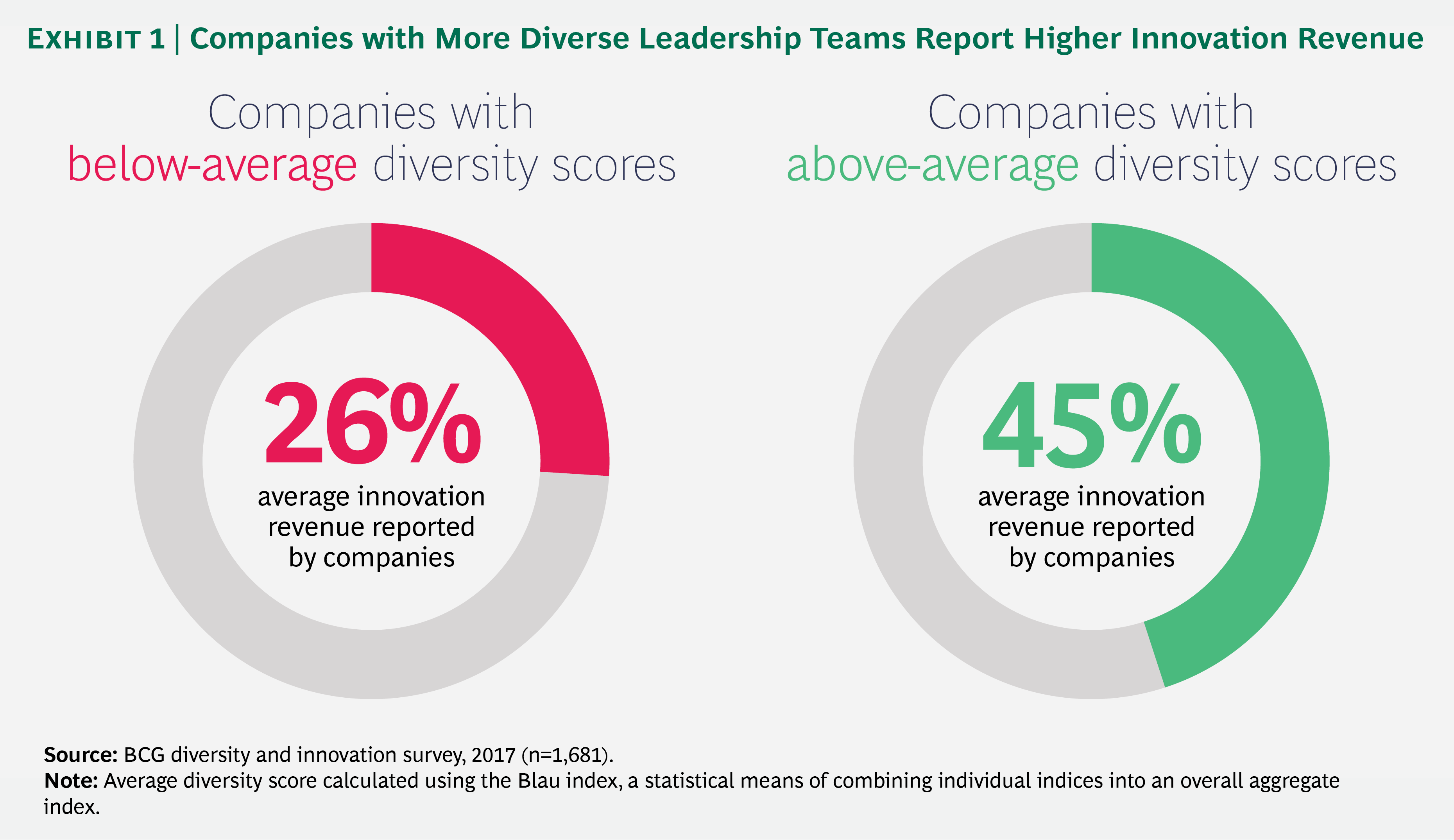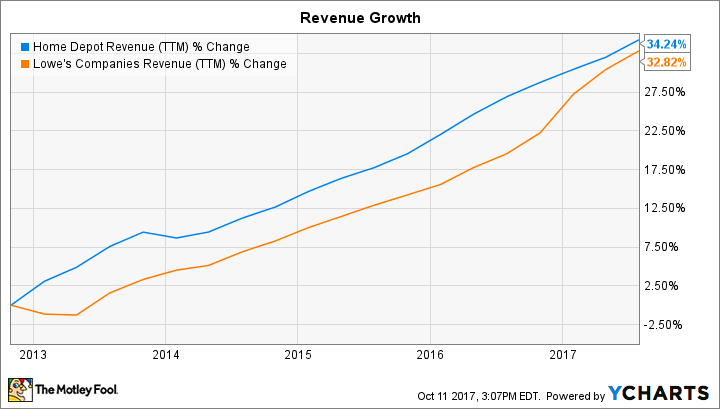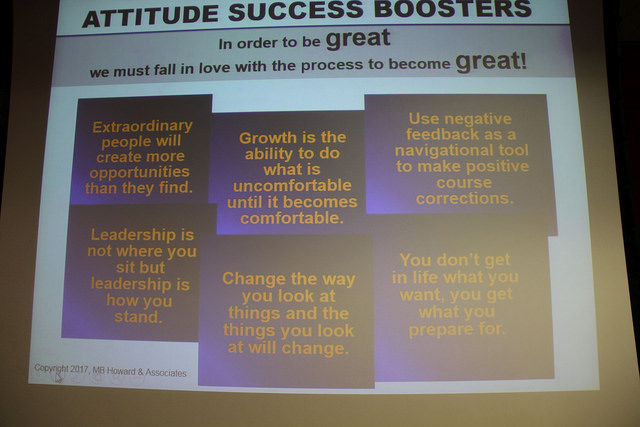|
|
|
Tuesday, April 24th, 2018

It’s always gratifying when something I wrote in years past, based on my own experience, is validated by current research. Yesterday’s Oldie about privilege is no exception.
I wrote it in 2015 and last week I read the validating research in the Harvard Business Review (love these little ego trips).
There are lots of people held back by bias. And that means that some of the people at the top have advanced partly through privilege.
Our research finds the idea of being advantaged to be uncomfortable for many senior leaders. We interviewed David, a senior executive who recognizes both having benefited from unfair advantages and the injustice of bias. He’s tall, middle-aged, well-educated, heterosexual, able-bodied, white, and male — and these provide David with unearned advantages that he intellectually knows he has, but that in practice he barely notices. He tells us he feels an underlying sense of guilt. He wants to feel that his successes in life are down to his abilities and hard work, not unfair advantage. “I feel like a child who discovers that people have been letting him win a game all along,” he says. “How can I feel good about myself succeeding if the game was never fair?”
Over the years, I’ve found the idea of ‘fairness’ and ‘unfairness’ deeply embedded in people’s MAP (mindset, attitude, philosophy™) where it has a major impact on all three MAP components.
In speaking with leaders about their built-in advantages, we have seen that David’s experience is widely shared. Acknowledging these advantages can challenge their very identities and sense of worth.
As is often the case, normalcy erases awareness.
Our research on speaking truth to power shows there is often a blind spot among the powerful, preventing them from seeing their impact on the less powerful. We call this advantage blindness. When you have advantage blindness, you don’t feel privileged. You don’t notice a life of special treatment; it’s just normal. You don’t think about your physical safety most of the time; you don’t worry about holding hands with your partner in public; when you get angry, no one asks you if it’s because of your hormones; and people in power generally look like you.
The results of the researchers interviews list three negative reactions
- Denying the playing field is unlevel.
- Focusing on one’s own disadvantages.
- Denying the playing field is unlevel.
And three positive ones
- Owning personal prejudice and bias.
- Empathy from connecting with people who are “other.”
- Putting personal advantage to collective good use
The one problem with the research is it’s focus on executives, which is to be expected from Harvard, but the same advantages, bias, guilt, and negative reactions can be found at all levels.
The good part is that the positive approaches discussed also work at all levels.
What should you do next?
- Read the article.
- Consciously and honestly identify your own advantages.
- Write (not keyboard) them down.
- Reread the list often.
- Heighten your awareness.
- Lower your defensiveness.
- Implement the actions described and add your own.
While you can’t eliminate societal advantages, you can put them to work for the greater good. Doing so will go a long way to validating your advantaged success.
Image credit: Duck Lover
Posted in Ducks In A Row, Personal Growth | No Comments »
Monday, April 23rd, 2018

Poking through 11+ years of posts I find information that’s as useful now as when it was written.
Golden Oldies is a collection of the most relevant and timeless posts during that time.
Privileged is different than entitled. Entitled mindsets believe the world owes them, whereas privileged is often unconscious — a matter of birth. Not necessarily born to great wealth, but being born with fewer challenges, such as white instead of black, brown, yellow, red, or any combination thereof; male, instead of female. Interested/knowledgeable parents. Average-to-good schools. Etc.
Most don’t see themselves as privileged, like Rick, in the story below.
Read other Golden Oldies here.
If you’re an outsider, or even an insider prone to objectivity, Silicon Valley’s culture is a mess.
When I said as much to “Rick” his response caught me off guard — although it shouldn’t have.
“I wish they would just give it a rest. I am sick and tired of all the crap about wealth inequality, lack of diversity and privacy rights. That stuff is not my responsibility. I’ve worked hard and deserve my success; nobody went out of their way to help me. I’m sure not privileged and I figure if I can do it so can they.”
I’ve heard this before, but it still leaves me speechless.
Rick is white, nice looking, middle class family, raised around Palo Alto, graduated from UC Berkeley; his dad worked for Intel.
Yet he doesn’t see himself as privileged.
Over the years I’ve known thousands of Ricks.
And therein lies the true problem.
Because it’s hard to change that which doesn’t exist.
Image credit: Dagny Mol
Posted in Personal Growth | No Comments »
Monday, April 9th, 2018

Poking through 11+ years of posts I find information that’s as useful now as when it was written.
Golden Oldies is a collection of the most relevant and timeless posts during that time.
Since the start of this blog 12 years ago, I’ve written numerous times about the sheer idiocy of using age to screen talent. This post mentions several examples that easily refute Vinod Khosla’s ignorant comment on age and creativity, but here is an even better example, since software is supposed to be a young person’s game.
Yukihiro Matsumoto was born in 1965; in 1995 he released the Ruby programming language to open source. Of course, at 30 he was still within Khosla’s window. In 2012 he open-sourced MRuby, in 2014, at the ripe old age of 49 he open-sourced his work on streem, a new scripting language and he is still going strong.
Age as a criteria when hiring is just plain stupid, no matter the size of your company.
Read other Golden Oldies here.
It’s always interesting to see young people following in the footsteps of their predecessors.
Even more so when they hotly deny doing it.
But the frosting on the denial cake is that they are following in some of the stupidest footsteps.
Which they are doing in droves.
Last week I wrote how stupid it is to stereotype 80 million millennials.
Before that is was management’s stupidity regarding Gen X.
Age, however, is the biggest stupid and has been for decades.
For Boomers, the breakpoint for when a person became hopeless and valueless was 30; Millennials raised it to 40.
As bad as age discrimination has been in general, it is far worse in tech.
VC Vinod Khosla crystallized and popularized this mindset back in 2011.
“People under 35 are the people who make change happen. People over 45 basically die in terms of new ideas.”
That means you can expect no more creativity from Larry Page, Sergey Brin, Marc Benioff, Parker Harris and Satya Nadella. (For insight to other fields read the article.)
Not to mention that 32 year-old Mark Zukkerberg only has a few good years left.
There are thousands more at all levels, I just picked recognizable people to better illustrate the stupidity.
The difference between when the Boomers did it and now is the notice and action being taken.
This past week, the EEOC joined a probe behind a federal class action lawsuit against Google filed last month, charging that the search giant “engaged in a systematic pattern” of discrimination against applicants over the age of 40. The suit, expanding upon a related case filed earlier this year, cited data from Payscale that placed the median age of Google’s workforce at 29, with a margin of error of 4%. By contrast, the median age for U.S. computer programmers is 43.
Actually, I will probably find it somewhat amusing to watch founders as they try to meet candidate demand for the compensation and perks of the past few years in today’s do-more-with-less/revenue-based-business-model world.
That also goes for many, not all, by a long shot, tech workers who are looking for those same jobs and perks.
So heed the advice I recently gave a founder who took advantage of my standing offer of free help (both my phone number and email are posted on this blog).
He asked how to land a “star” candidate looking for “yesterday’s” compensation and refused to consider anything less.
My advice was to take a pass, refer him to Facebook or Google hire a reality-based programmer who can do the needed job and was sincerely interested in his product and vision.
The only thing he might lose were a few late night bragging rights.
In short, grow up, get smart and hire talent — no matter its age or color or gender.
Image credit: Ben Sutherland
Posted in Culture, Entrepreneurs, Golden Oldies, Hiring, Personal Growth | 1 Comment »
Friday, April 6th, 2018

A Friday series exploring Startups and the people who make them go. Read all If the Shoe Fits posts here.
I often field questions about compensation, stock allocation and bonuses that revolve around the idea of fairness.
There have been more calls since a rise in media attention to gender pay inequities, especially focused on tech. They look at what other countries are doing, such as a recent UK law, and wonder if similar things could happen here or if someday down the line they will have to do as Marc Benioff did.
Whether the subject starts with diversity or compensation, my callers fall in two distinct camps.
- Those looking for ways to bake fairness into their company’s DNA; and
- The ones who want to cloak current unfair actions in a veneer of acceptability.
(I have to admit that listening to the second group stumble around trying camouflage what they want to do is amusing, but definitely not funny.)
Of course, it’s easiest for founders just starting, since they have no historical staff or (hopefully) bad habits, but any size organization can do it if management is determined and has the grit to follow-through.
Here are some basics actions:
- Develop core values around fairness, diversity, transparency, etc., make both values and culture public on their site, and follow-through when recruiting.
- Salary and stock offers should be based on the value and effect of the position on the company’s success, as opposed to the person you are hiring.
- Before approving compensation compare it with similar people inside and out for fairness, especially if the candidate is a woman or minority.
- Talk to others, such as Gusto cofounder and CTO Edward Kim or the folks behind the Founders for Change coalition.
The most critical factor is a willingness to pass on hiring people when it’s obvious they are assuming it’s just talk or that you should make an exception for them because they are special.
As I’ve said in the past, “If you pay your people equally when you hire and promote there won’t be a pay gap for you to erase.”
Image credit: HikingArtist
Posted in Compensation, Culture, Hiring, If the Shoe Fits | No Comments »
Tuesday, March 20th, 2018

A few years ago I ended a post about youth and age with these words,
Everybody in tech focuses on the importance of “data driven” decisions—until the data doesn’t support the decision they want to make.
That’s when they start talking about the importance of “gut instinct” and “unconscious pattern recognition.”
Data only matters when it supports prevailing prejudice.
Everywhere you look you’ll find well-researched data that proves diversity significantly improves companies’ financial results no matter how you measure them.
Real diversity, however, means more than hiring women and minorities.
It means hiring them — men, women and minorities — at all stages of life.
Because, simply put, experience comes with age — wisdom is supposed to, but there’s no guarantee that it will.
In 2015 Google celebrated it’s experienced people.
The doll, a special edition of Google’s Android mascot, was a jokey tribute to the Greyglers, a group for the 40-and-over crowd at Google, and the doll hinted at how it felt to be an older worker in tech: funny, self-conscious, a little out of place.
That description certainly doesn’t fit Greyglers such as Sundar Pichai, Larry Page, Sergey Brin, and Susan Wojcicki to name the most obvious.
Satya Nadella was 47 in 2014 when he envisioned a new Microsoft. Not only envisioned it, but is orchestrating it into existence.
No way a twenty-something could have done either.
Age has enormous value, especially in fast-moving industries like tech.
The value at all levels comes not only from understanding the need for flexibility and developing it, but also the learning curve that comes from learning/using/discarding/repeat languages, etc. at the speed of tech. Not to mention the empathy that sparks innovation and usually (not always) comes with time and living.
Beyond the norm, the value of age/experience increases exponentially when it come to enterprise products.
Innovative/creative solutions to enterprise challenges resonate more clearly when building on a historical knowledge base than when starting from scratch.
So whether you are focusing on diversity hiring because it’s the right thing to do or for the financial gain, remember that true diversity goes beyond gender and race to encompass age.
Image credit: Search Engine Roundtable
Posted in Culture, Hiring | No Comments »
Friday, March 16th, 2018

After reading about Gusto’s approach to diversity, I posed this question to a male founder I know and a friend of his, also a founder.
As a founder, what would you do if a top performer asked for a one-on-one meeting because she was uncomfortable and being treated poorly as the one woman on a team of 18 men.
The responses weren’t surprising; one was disappointing and the other disgusting.
One said he would do what he could, but also tell her that she’d be better off if she toughened up.
I don’t know the second guy very well, but it turned out that he is much more a bro. He said he’d tell her to stop whining and “grow a pair” and if it still bothered her maybe software engineering wasn’t where she belonged.
Compare them to Gusto cofounder and CTO Edward Kim’s, response.
Kim, Lee says, was extraordinarily receptive. In fact, he made it a personal project to study the gender breakdown on the engineering teams at other tech firms. The numbers he found were dismal.
Only 12% of the engineering staffers at 84 tech firms were female… He also read a 2015 McKinsey study showing that companies with diverse workforces outperform financially. “The fact that no one else in tech was able to really crack the gender diversity nut and solve it represented an opportunity for us,” Kim says. “If we want to reimagine what HR is like for the very diverse workforces of our small-business customers, we ourselves have to build a diverse workforce.”
Boston Consulting published findings similar to McKensey’s in January. (Well worth reading.)
 Kim’s and Gusto’s efforts have paid off handsomely. Kim’s and Gusto’s efforts have paid off handsomely.
- Gusto’s women-only recruiting effort lasted six months. It stopped, Kim says, because “we exceeded our goals.”
- Though hiring women engineers took more time, Kim says, Gusto never dropped its standards. “It bothers me when people say that prioritizing diversity lowers the bar in terms of the caliber of talent you’re able to hire,” he says. “That is simply not true.” Nor, he says, was there any pushback from inside Gusto.
- Gusto also addressed its compensation policy. Since 2016 its salaries have been audited by Mercer, a human resources consulting firm, which has found no gender pay disparity. Benefits include 16 weeks of paid leave for a primary parent, plus an additional $100 a week for groceries and food deliveries, $100 a month for six months of housecleaning and up to $500 for a baby-sleep coach.
- Now that 17 of Gusto’s 70 engineers are female, it’s getting a little easier, says Gusto’s HR head, Maryanne Brown Caughey. “It’s kind of a domino effect,” she says. “Women know they’re joining a welcoming community.”
While Kim is pleased with the results, he isn’t resting on his laurels.
While Gusto has made progress, its engineering team has no Latinos and no African-Americans. Kim says Gusto has two hiring goals in 2018: senior women and racial diversity in engineering. “The way we make progress is by focusing on one problem,” Kim says, “and then we move on to the next.”
Role model, indeed; techdom needs a lot more founders like Kim.
Image credit: Gusto
Posted in Culture, Hiring, Role Models | No Comments »
Tuesday, March 13th, 2018

Way back in 2007 I described what I call the number one best motivator.
Over the years, I’ve found vested self-interest (VSI) to be not only the most powerful people motivator around (…) And the idea must have merit when you consider that a Sudanese cell phone billionaire is using it to incentivize African heads of State to act responsibly.
So, instead of hiring for diversity and the social good, why not hire for greed, pure and simple.
You won’t even need to rationalize your decision, since the data makes it a no-brainer.
Researchers from the Massachusetts Institute of Technology and George Washington University calculated that going from an all-male or all-female team to one with equal representation of men and women correlated with a revenue gain of 41%.
41%! That ain’t chicken feed.
Moreover, the phenomenon is global.
A study of 1,000 companies across 12 countries by McKinsey & Co. showed that those in the top quartile for gender diversity were 21% more likely to have above-average profitability than companies at the bottom of the pile. If companies had a greater balance in ethnicities at work, they would on average perform 33% better than those that don’t. Other studies that McKinsey did in previous years (paywall) yielded similar conclusions.
It seems obvious that women would understand women customers better than men do, but if you doubt it Home Depot is an excellent case study.
Trish Mueller joined HD and became CMO a few years later. She recognized that the data collection showing most purchasers were male was incorrect and the company set out to disversify their market.
In 2013, the Home Depot’s core executive team had a strategy meeting about how the brand could appeal to more customers and markets—like women—and expand their product range. There were two women executives in the room: Mueller and Cara Kinzey (Senior Vice President, Technology). Trish and Cara suggested that the brand’s product range should be as wide as its name. Home Depot included the word “home,” after all, and could expand into product categories like cookware, small appliances, and kitchen accessories.
“Cara and I came at it from a women’s perspective,” Trish says, “without it being that overt.”
They decided to test their ideas on the next Black Friday sale.
They gave their merchants a broad mandate: “If it’s something you can conceive of using in your home, let’s have a conversation about it.”
Some of the home appliances and cookware options they tested proved so successful that they’re now kept long-term inside every store. The Home Depot also had some rather unexpected hits during their Black Friday sales, like a giant fluffy teddy bear that sold for $29.99. “Who would’ve ever thought to see that at Home Depot?,” Mueller says. “But we were sold out in ten minutes, the first year we carried them.”
But is the effort paying off consistently beyond Black Friday?
Unlike smaller rival Lowe’s, Home Depot isn’t aggressively adding to its store base. In fact, it has opened just one new location in the U.S. market since 2013. Yet the retailer is beating Lowe’s in overall revenue growth thanks to its stronger customer traffic.
 Would HD have had the savvy to go after the women’s market without Mueller’s and Kinzey’s viewpoint? Unlikely for guys who thought pink power tools were the answer. Would HD have had the savvy to go after the women’s market without Mueller’s and Kinzey’s viewpoint? Unlikely for guys who thought pink power tools were the answer.
Has it translated to more diverse hiring? It has in Canada (I couldn’t find US stats).
So, for all you guys who have no time for moral imperatives, turn your VSI up to high and do it for greed.
Image credit: Pexels and MotleyFool
Posted in Communication, Culture, Ducks In A Row, Hiring | 1 Comment »
Friday, March 9th, 2018

A Friday series exploring Startups and the people who make them go. Read all If the Shoe Fits posts here.
News of a Bay Area exodus has been appearing off and on for a few years.
I saw the latest stats,
But in the last three months of 2017, San Francisco lost more residents to outward migration than any other city in the country, according to data from Redfin, the real estate website. A recent survey by Edelman, the public relations firm, found that 49 percent of Bay Area residents, and 58 percent of Bay Area millennials, were considering moving away.
in and article about a much different group that is becoming disenchanted with it: VCs.
“I’m a little over San Francisco,” said Patrick McKenna, the founder of High Ridge Venture Partners who was also on the bus tour. “It’s so expensive, it’s so congested, and frankly, you also see opportunities in other places.”
In this case, ‘other places’ refers to the Midwest and cities like Detroit.
Which I find amusing, considering that
VCs are known to invest primarily in young, white males, mostly from elite colleges, who are introduced by a trusted source in their network.
They aren’t known for investing in women entrepreneurs
Venture capitalists invested $58.2 billion in companies with all-male founders in 2016. Meanwhile, women received just $1.46 billion in VC money…).
And practically none went to Black women.
Only 11 startups led by Black women have raised more than $1 million in outside funding—and are typically funded by the same three investors.
So here’s the question.
Knowing the personal attributes that VCs look for (and are comfortable with) who will they fund?
Image credit: HikingArtist
Posted in Business info | No Comments »
Wednesday, February 21st, 2018

Yesterday we looked at the new methodology being used to determine Fortune’s 100 Best Places to Work, which has been tweaked to emphasize feedback from those who self-identified as women, minorities, or LGBTQ.
Hard data has proven over and over that a diverse leadership and workforce increases revenues, adding substantially to company revenues and success.
Companies have spent millions on diversity training, so why hasn’t it worked?
It shouldn’t be surprising that most diversity programs aren’t increasing diversity. Despite a few new bells and whistles, courtesy of big data, companies are basically doubling down on the same approaches they’ve used since the 1960s—which often make things worse, not better. Firms have long relied on diversity training to reduce bias on the job, hiring tests and performance ratings to limit it in recruitment and promotions, and grievance systems to give employees a way to challenge managers.
The answer is fairly obvious to anyone who considers people, instead of datasets, etc.
In short, people don’t like being told what to think/do.
As social scientists have found, people often rebel against rules to assert their autonomy. Try to coerce me to do X, Y, or Z, and I’ll do the opposite just to prove that I’m my own person.
Not exactly rocket science.
So what’s a successful approach?
It’s more effective to engage managers in solving the problem, increase their on-the-job contact with female and minority workers, and promote social accountability—the desire to look fair-minded.
Or in today’s terms, DIY
Maybe it is rocket science.
More proof that diversity is (finally) being taken seriously is found in a lawsuit recently filed by IBM.
Diversity hiring, once a niche pursuit of human resources, has become a major recruiting priority at many US companies. As evidence, IBM is suing its former chief diversity officer for bolting to Microsoft.
Diversity hiring as a trade secret.
I love it.
Image credit: US Forest Service – Southern Region
Posted in Business info | No Comments »
Tuesday, February 20th, 2018
Fortunes 2018 list of 100 Best Places to Work is out and guess who isn’t on it anywhere?
Google.
Why?
Because the criteria was tweaked this year.
But there’s something different about this year’s list, which was based on responses from more than 300,000 employees at large companies that opted into the survey. A change in methodology this year put greater emphasis on feedback from survey respondents who self-identified as women, minorities, or LGBTQ. It is the first time, says Michael Bush, the CEO of Great Place to Work, that the list reflects what he has dubbed a “Great Places to Work For All” mindset.
At first, adding “all” to the pot scared the heck out of many CEOs, but after explaining, most came back.
His clients could see that a “for all” commitment would mean the firm was “maximizing the potential of all employees.” (…) Bush reports that organizations scoring highest under the new “For All” methodology “grew their revenue about 10 percent faster over the same period than the companies that scored best according to [Great Place to Work’s] old methodology.”
Some of the Top 10 may surprise you, but Salesforce in the top slot shouldn’t.
One reason Google didn’t participate in the survey may be found in job site Hired’s 2018 State of Salaries report.
The average worldwide salary for a tech worker in 2017 was $135,000, says Hired, up 5% from the 2016 survey. (…) But the data also showed that a person’s race has what Hired called “a significant impact” on salary in the tech industry. And black tech workers are the ones getting the most shortchanged — Hired found that black tech workers are making $6,000 a year less than their white peers, on average.
Interestingly, the data suggests both a cause and a solution. Black candidates and Hispanic candidates tend to begin their salary negotiations at a lower point than their white counterparts, according to this data.
White candidates tend to ask for the highest salary, $130,000, and get offered $136,000 (+4.6% on their request).
Meanwhile, black and Hispanic candidates using Hired’s platform say their preferred salary is $124,000, on average. But even when an offer beats their initial request, it’s still relative to the lower number. Black workers are being offered $130,000 (+4.8%) on average and Hispanic candidates are offered $131,000 (+5.7%). Asian candidates ask for $127,000 on average and are offered $133,000 (+4.7%).
I guess it’s just simpler to ignore this and similar surveys and ignore the media questions about why you didn’t participate, than it is to fix the problem — and this one is definitely fixable.
No one ever said solving fundamental problems like diversity was easy, especially when it takes more than data and algorithms.
Join my tomorrow for a look at why most diversity efforts fail, what works, and how diversity programs are being considered trade secrets.
Video credit: Fortune
Posted in Compensation, Culture, Ducks In A Row, Hiring, Motivation, Retention | No Comments »
|
 Subscribe to
Subscribe to
MAPping Company Success
About Miki 
Clarify your exec summary, website, etc.
Have a quick question or just want to chat? Feel free to write or call me at 360.335.8054
The 12 Ingredients of a Fillable Req
CheatSheet for InterviewERS
CheatSheet for InterviewEEs™
Give your mind a rest. Here are 4 quick ways to get rid of kinks, break a logjam or juice your creativity!
Creative mousing
Bubblewrap!
Animal innovation
Brain teaser
The latest disaster is here at home; donate to the East Coast recovery efforts now!
Text REDCROSS to 90999 to make a $10 donation or call 00.733.2767. $10 really really does make a difference and you'll never miss it.
And always donate what you can whenever you can
The following accept cash and in-kind donations: Doctors Without Borders, UNICEF, Red Cross, World Food Program, Save the Children
*/
?>About Miki
About KG
Clarify your exec summary, website, marketing collateral, etc.
Have a question or just want to chat @ no cost? Feel free to write
Download useful assistance now.
Entrepreneurs face difficulties that are hard for most people to imagine, let alone understand. You can find anonymous help and connections that do understand at 7 cups of tea.
Crises never end.
$10 really does make a difference and you’ll never miss it,
while $10 a month has exponential power.
Always donate what you can whenever you can.
The following accept cash and in-kind donations:
|
















